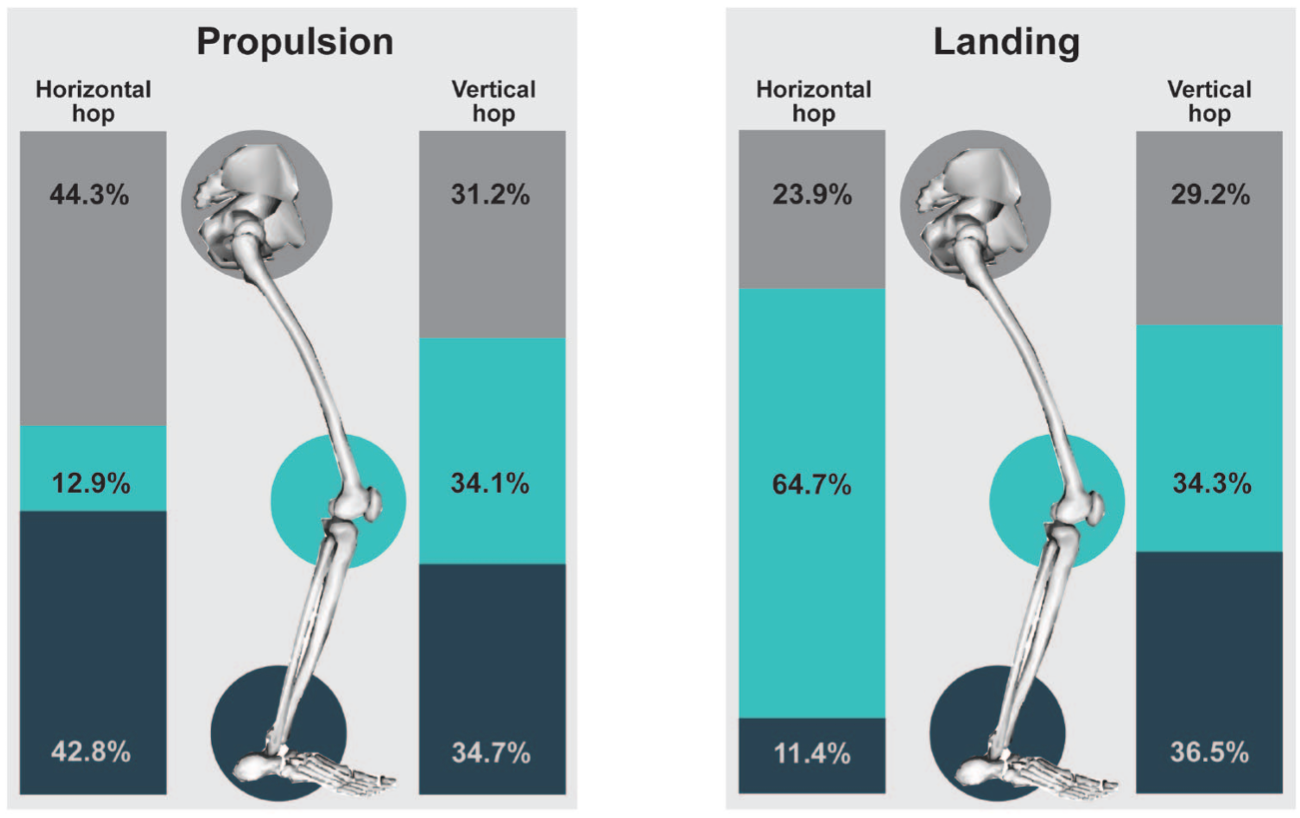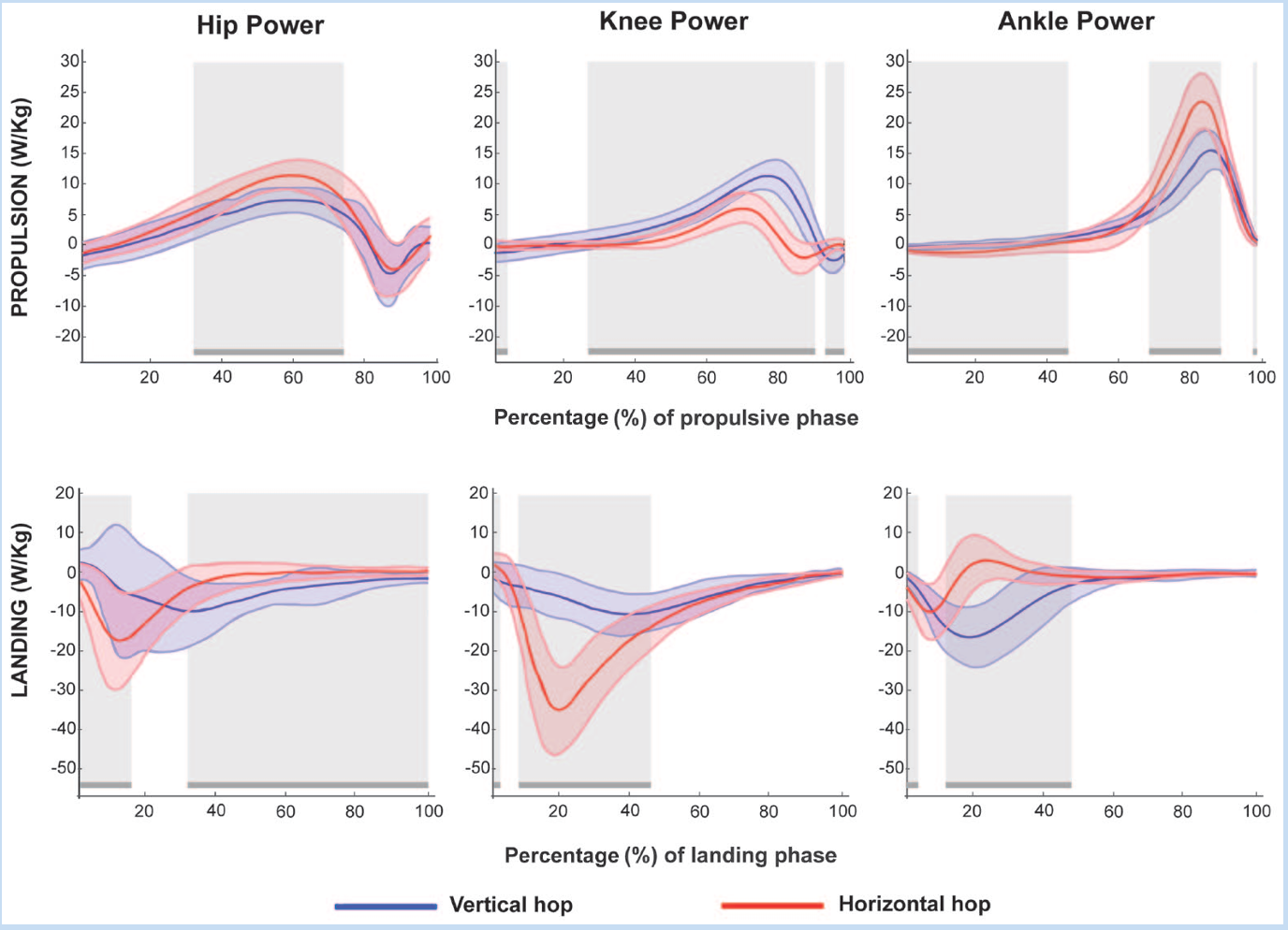In sports performance and rehab, single-leg hop tests (vertical and horizontal) are common tools used to assess lower-limb function.
However, it's been unclear whether these tests actually measure the same aspects of leg function.
This study breaks down the biomechanics behind each hop type to determine how each joint contributes, helping us understand when and how to use each test meaningfully in training or rehab.
What are the joint function differences between vertical and horizontal hops?
Study: Vertical and Horizontal Hop Performance: Contributions of the Hip, Knee, and Ankle. Sports Health
What Did the Researchers Actually Do?
Study Design
- Participants: 20 healthy, active adult males (avg. age 28.9), all without recent injuries.
- Tasks: Participants performed single-leg vertical and horizontal hops on force plates, with reflective markers capturing joint movements.
- Conditions: Both jump types were standardized (hands on hips, same warm-up) and tested in a lab using motion capture and ground reaction forces.
Variables Measured
- Peak joint power
- Work done during propulsion and landing
- Percent contribution of hip, knee, and ankle
What Did They Find?

Propulsion Phase
- Vertical Hop
- Each joint contributed roughly one-third of the total work (hip: 31%, knee: 34%, ankle: 35%).
- Peak ankle power was highest, but hip and knee power were not significantly different.
- Horizontal Hop:
- Dominated by hip (44%) and ankle (43%) with minimal knee contribution (13%).
- Peak ankle power was more than double the knee’s (effect size d = 5.38).
Landing Phase
- Vertical Hop:
- Similar joint contributions again (hip: 29%, knee: 34%, ankle: 37%).
- The ankle and hip absorbed more power than the knee.
- Horizontal Hop:
- Knee took the brunt of landing—absorbing 65% of total work (hip: 24%, ankle: 11%).
- Massive absorption difference: knee peak absorption was 3x higher than ankle (d = 3.18).
Timing of Joint Contributions
- In propulsion, both hops followed a proximal-to-distal sequence: hip → knee → ankle.
- In landing, sequences diverged:
- Vertical hop: absorption starts at the ankle, followed by near-simultaneous involvement of the hip and knee.
- Horizontal hop: knee absorbed the most and latest, carrying the majority of landing load.

What Does It All Mean?
Different Hops, Different Demands:
- Vertical hops demand a balanced contribution from all joints.
- Horizontal hops rely heavily on hip and ankle for takeoff, and knee for landing.
Don’t Use Horizontal Hops to Assess the Knee:
- Since the knee contributes just 13% of propulsion in horizontal hops, distance alone is a poor proxy for knee strength or function.
- Vertical hop height is more sensitive to knee capacity—offering better insight post-injury.
Temporal Patterns Matter:
- Rehab and performance programs should account for joint-specific timing of force production and absorption.
- For example, training ankle reactivity for landing may be more useful for vertical hops.
Limitations
- Only male participants were studied, these results may not generalize to female athletes, who face higher ACL injury risk.
- Inverse dynamics don’t account for co-contraction, energy transfer, or elastic properties, meaning actual muscle strategies might differ slightly.
Coach’s Takeaways
- Use vertical hops if you're testing knee function, especially post-ACL injury.
- Train the ankle for vertical hop takeoff and landing.
- Don’t rely on hop distance alone to clear athletes for return-to-play.




